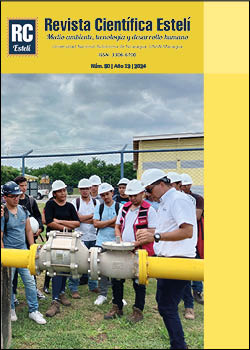A hierarchical prehispanic settlement in Santa María de Nueva Segovia, Nicaragua, 300 to 995dc
DOI:
https://doi.org/10.5377/esteli.v13i51.18998Keywords:
Archaeology Nicaragua, pre-Hispanic architecture, settlement pattern, daily practices, regional linksAbstract
The rescue of archaeological evidence that took place between 2021 and 2022 in the southern part of the municipality of Santa María de Nueva Segovia revealed its ancestral roots expressed in the remains of an ancient settlement documented in an extensive area located between the communities of El Zapotal-Las Brisas and Sipilde on the border between Nicaragua and Honduras. The study, with a multidisciplinary approach, combined archaeology, geology, anthropology and topography; with the objective of documenting the settlement pattern of “Ciudad Perdida” and its possible regional links. Surveys and stratified excavations were carried out that allowed the recovery of significant archaeological material, including 303 structures distributed in four architectural complexes. As a result, the understanding of a complex social organization expressed in the extension and spatial structuring of the settlement, in its construction systems and in its daily practices was obtained. This paper emphasizes the architectural characteristics and those ancestral practices that still survive.
Downloads
203
HTML (Español (España)) 66
Published
How to Cite
Issue
Section
License
Copyright (c) 2024 Revista Científica de la FAREM-Estelí

This work is licensed under a Creative Commons Attribution-NonCommercial-ShareAlike 4.0 International License.
© Revista Científica de FAREM-Estelí

